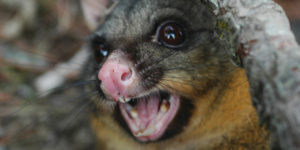On July 25, 2016, the New Zealand government introduced an ambitious new goal of exterminating every rat, stoat, possum and feral cat and other invasive predatory animal from the country by 2050.
Prime Minister John Key announced the formal target today, calling it the most ambitious conservation project in the world. “While once the greatest threat to our native wildlife was poaching and deforestation, it is now introduced predators,” Key said. “Rats, possums and stoats kill 25 million of our native birds every year, and prey on other native species such as lizards and, along with the rest of our environment, we must do more to protect them.”
At the heart of the policy is a new $28 million joint venture, Predator Free New Zealand Limited, which will identify large-scale pest eradication projects and attract private investment to boost their reach.
Sir Rob Fenwick, the chair of the Predator Free New Zealand Trust and a leading advocate for pest eradication, said it would allow a military-level response to the problem for the first time. “It’s a real game-changer. We’ve been killing predators now for decades and in the past it’s been quite an un-strategic approach to this campaign. This fund will drive a more strategic and comprehensive approach to a landscape-scale assault on predators that we haven’t seen before,” he stated.
“The invasion of predators has reached a tipping point and most of our native birds are at risk, most tragically, the kiwi. If we can lift the scale of predator control to regional landscapes, including communities where people live, which has not been done before, we can win the war,” Fenwick continued.
Announcing the policy in Wellington, Key said rats, stoats and possums do at least $3.3 billion of economic damage to the primary sector.
New Zealand’s iconic kiwi, a small, flightless bird with a long bill, is one of the native birds endangered by rats and weasels.
Predator Free NZ is committed to dramatically reducing New Zealand’s invasive predator populations, including rats, stoats, possums, weasels and ferrets. They want to protect native species and see their populations increase in our lifetime. It’s one of the most ambitious conservation projects undertaken in NZ – ambitious, but achievable.
Predator Free NZ Trust is delighted the Government wants to borrow its name to administer new funding for a large scale assault on animal pests that destroy native species.
The Trust was formed in 2013 to support volunteers and community conservation groups who do predator control. It has created a geo spatial map locating hundreds of volunteer groups all over the country dedicated to killing predators like rats, stoats, possums and wild cats.
Innovative traps, irresistible baits, new techniques for eradicating rodents from islands and for keeping mainland sanctuaries predator-free – New Zealand’s scientific community are leading the way in these fields and more. Animal rights activists and celebrities (who seem to only be concerned with the rights of cute, charismatic, and/or large animals) condemned a similar plan announced by Australia last year to use poison to eliminate millions of feral cats.
Their work also gives new – and sometimes surprising – insights into the ecology of both introduced predators and our vulnerable native species.
New Zealand’s pest management system is pretty complex; after all, there are different predators operating in different ways in different parts of the country.
Many groups are involved in managing pests, including central government agencies, regional councils, industry groups, Maori iwi, non-Government organisations, landowners and occupiers, community groups and the general public.
The National Policy Direction for Pest Management (the National Direction) aims to improve the alignment and consistency of pest management plans and programmes across New Zealand.
The National Direction:
- Sets out the framework for developing national and regional pest or pathway management plans and small-scale management programmes;
- Clarifies the Biosecurity Act’s requirements for these plans;
- Ensures that plans are aligned and consistent, both nationally and regionally;
- Outlines the requirements for developing good neighbour rules (to manage pests spilling across boundaries) in regional pest management plans.
See full NZ Herald article & photo credit.


